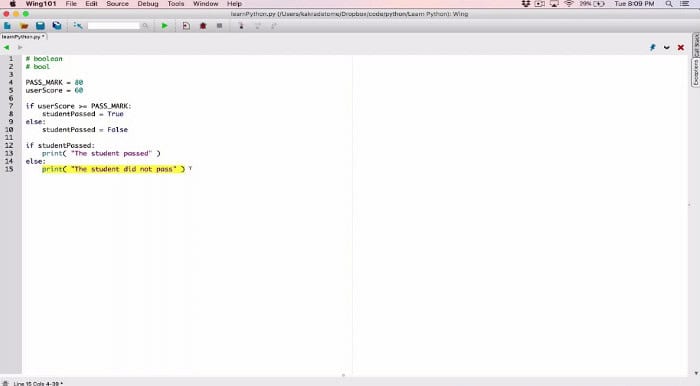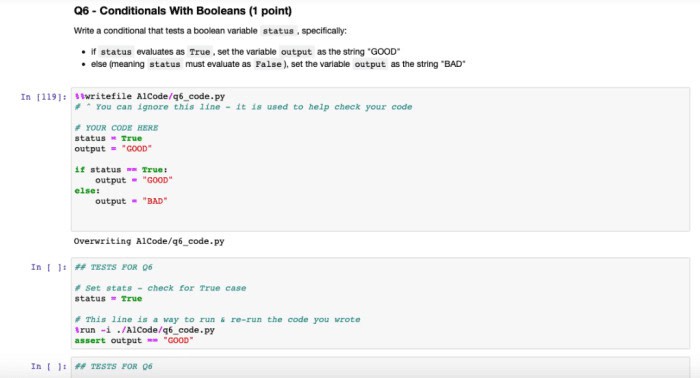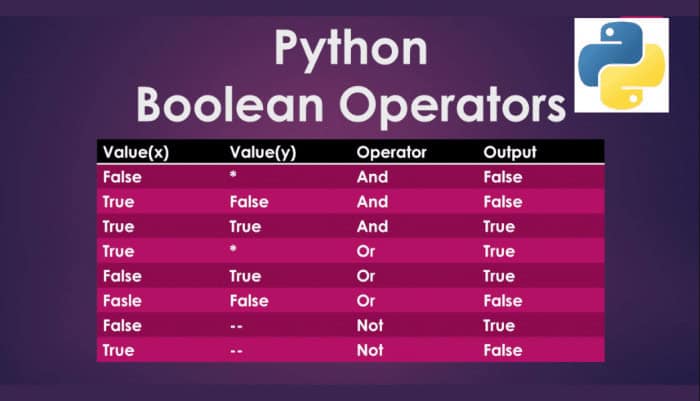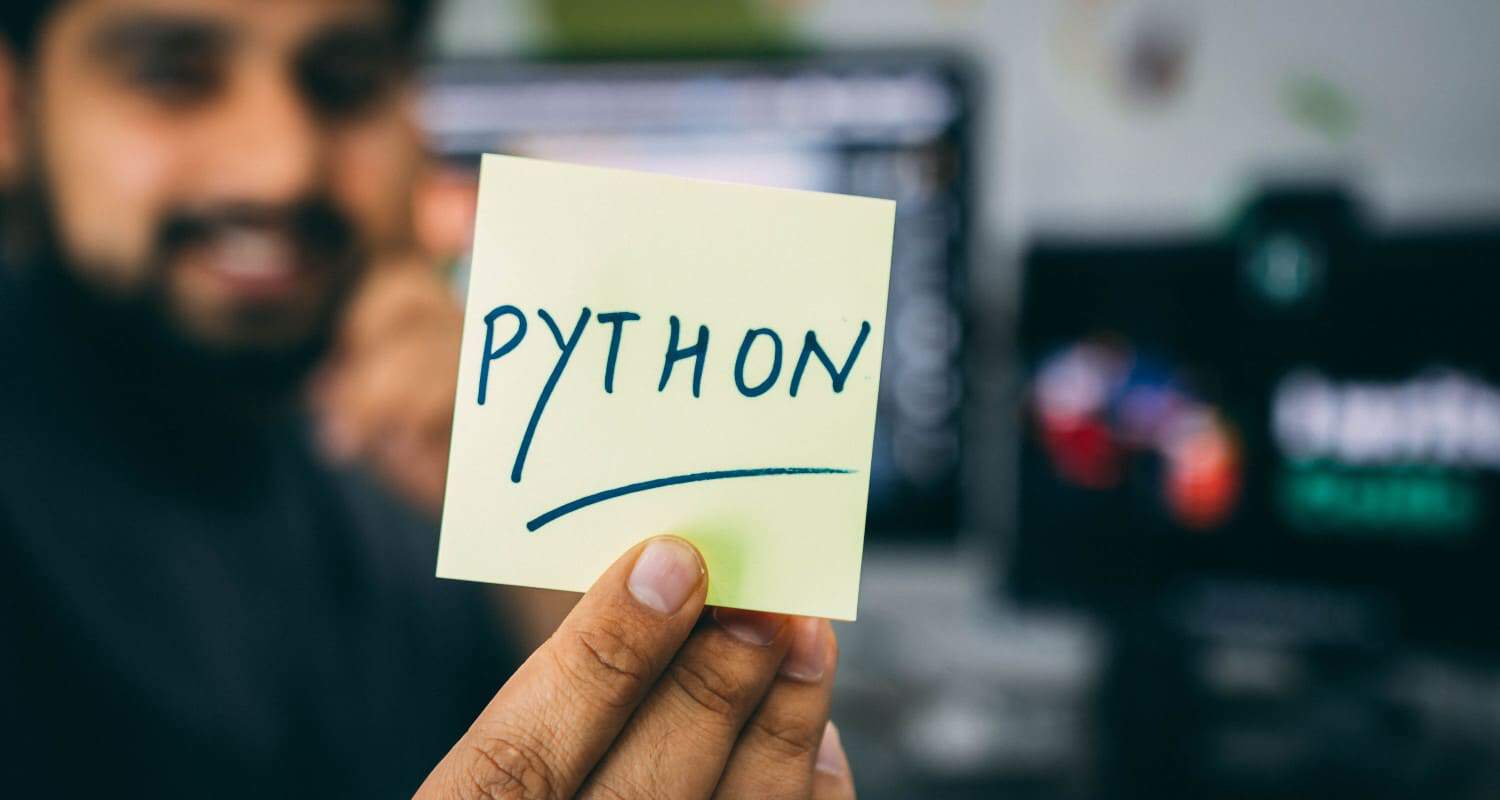Here you will learn about Python Boolean variables. Python is an interpreted high-level programming language known for its simple syntax. It frequently employs website development, scientific computing, data analysis, intelligent systems, and other fields. Python has dynamically typed variables, a large and active community, and a vast collection of libraries and modules. It is also an interpreted language, making it easy to debug and test code in real-time.
Python’s dynamically typed variables are one of its main characteristics, so you don’t have to specify the variable type before employing it. This makes the coding process faster and more efficient, as the interpreter automatically assigns a kind based on the variable’s value. You can also try out using a JavaScript variable in HTML.
Boolean variables in Python play a crucial role in programming, as they allow us to make decisions and control the flow of the program. They are variables that can only take two values: true or false. Furthermore, logical operators such as ” and,” or,” and “not” can join Boolean variables. Python’s syntax for declaring a Boolean variable uses the keywords “True” or “False.” Understanding the use of Boolean variables in programming and combining them using logical operators is essential for writing efficient and effective code.

In this article, we will discuss the intricacies of Boolean variables, including how to declare them, use them in conditional statements and comparison operations, and combine them using logical operators. This comprehensive tutorial will provide a solid understanding of Boolean variables in Python programming and enable you to use them effectively in your projects.
See Also: Best Python Books For Intermediate: Level Up Your Coding Skills
Table of Contents
Python Boolean Variables: Declaring Variables
In Python, a Boolean variable is declared using the keywords “True” or “False.” The syntax for creating a Boolean variable in Python is as follows:
variable_name = True or False
Here is an example of a code that creates a Boolean variable called “flag” and assigns it the value “True”:
flag = True
Using Boolean Variables in Conditional Statements
Conditional expressions like “if” and “while” frequently employ Boolean variables. A Boolean variable determines whether the code executes these statements.

For instance, the following command examines whether the Boolean variable “flag” is True and, if so, performs the print statement:
If flag:
Print ("Flag is True"")
In Python, zero is regarded as a false Boolean, but any value other than zero is considered true. Any non-zero integer, float, or string value in place of a Boolean variable. Using the following code, we can create an integer variable called “num” and use it in a conditional statement:
num = 5
If num:
Print ("Num is non-zero and considered True"")
It is important to note that only the values “True” and “False” are considered Boolean values in Python. Any other value, even if it is non-zero, is not considered a Boolean value and cannot use in place of a Boolean variable.
Using Boolean Variables in Comparison Operations
Boolean variables such as ” ==” and “! =” can also be used in comparison operations. These comparison procedures compare two values and yield a Boolean value. For example, the following code checks if the value of “num” is equal to 5:
result = (num == 5) print(result)
This code creates a Boolean variable “result” and assigns it the value “True” since the importance of “num” is equal to 5.
Combining Boolean Variables Using Logical Operators
Boolean variables can also be combined using logical operators, such as ” and,” or,” and “not.” The ” and” operator returns true when both operands are true, as opposed to the ” or” operator, which returns true if any operand is true. The “not” operator produces a Boolean value’s inverse.
For example, the following code creates two Boolean variables, “flag1” and “flag2,” and combines them using the ” and” operator:
flag1 = True flag2 = False result = (flag1 and flag2) print(result)
See Also: Javascript Vs. ReactJS: A Detailed Comparison
FAQs
What Python-specific rules apply to Boolean values?
Python's bool type corresponds to the two Boolean values True and False (capitalization must match exactly).
In Python, may Boolean values be unknown?
The null value is used to indicate a value of unknown for a Boolean statement or predicate. The data types listed below can be converted to the BOOLEAN data type: You can convert CHAR or VARCHAR to a BOOLEAN value: 't,' 'true,' 'y', 'yes,' 'on,' and '1' are cast to TRUE.
What does a Python Boolean variable's condition mean?
True and False are the two possible values for a Python bool variable. These values are capitalized in Python 3 since they are Python keywords. They cannot, therefore, be utilized as variables or given distinct values. Any variable may be made a bool by adding the values True and False.
Is Python's Boolean case sensitive?
Only two boolean values exist. Both of them are accurate. Since true and false are not boolean values (keep in mind that Python is case sensitive), capitalization is crucial.
If a Boolean is false, what happens?
True or false are the only two possible values for a Boolean variable. Booleans are frequently used alongside control statements to determine how a program should proceed. In this example, vertical black lines are drawn when the boolean value 'x' is true. Horizontal grey lines are generated when the boolean value 'x' is false.
Does Boolean allow for three values?
It was intriguing to learn that the PostgreSQL boolean data type—also known as 'bool'—is Trinary rather than Binary and that it can exist in one of three states: TRUE, FALSE, or 'unknown' (represented by a NULL). This is the common SQL three-valued logic system, also known by the names Trinary, Ternary, Trivalent, etc.
What values are Boolean limited to holding?
Boolean variables can only be True or False and are stored as 16-bit (2-byte) values.
Whether or not Boolean values are true?
Use the Visual Basic Boolean Data Type to store two-state values like true/false, yes/no, or on/off. Boolean has a default value of False. The recorded values for boolean values are not meant to be equal to numbers and are not saved as numbers either.
In Python, is Boolean a data structure?
One of the built-in data types in Python is the Boolean type. It serves as a representation of an expression's truth value. For instance, the statement 0 == 1 is False but the statement 1 = 2 is True.
Boolean variables maybe both?
Computers represent Boolean variables as 16-bit (2-byte) values that can hold two possible states: True or False. The value of a boolean variable is shown as either True or False.
What datatype does a boolean have?
A 1-byte data type, the BOOLEAN data type. True ('t'), false ('f'), or NULL are the only acceptable Boolean values. The values do not take the case into account.
How should a Boolean value be entered?
A variable can be converted into a Boolean datatype using the bool method. We've converted an integer to a boolean type in the example below. The bool technique can also be applied to comparison operator-based expressions. If the expression evaluates to True or False, the method will decide that.
Can a Boolean be held in a variable?
Boolean uses Dim, Public, or Private statement to declare variables. When given comparison results or the constants TRUE or FALSE, variables can store Boolean values. A Boolean variable is a 2-byte value that may be either -1 for TRUE or 0 for FALSE.
Conclusion
In conclusion, Boolean variables are crucial in decision-making and controlling flow in Python programming. They are variables that can only hold two values: true or false. Understanding how to declare, use, and combine Boolean variables using conditional statements and logical operators is essential for writing efficient and effective code in Python.
This tutorial provides a solid foundation for using Boolean variables in your Python projects. Start applying this knowledge and see how it can help you create more sophisticated and well-structured documents.
See Also: How To Save JavaScript Files?

